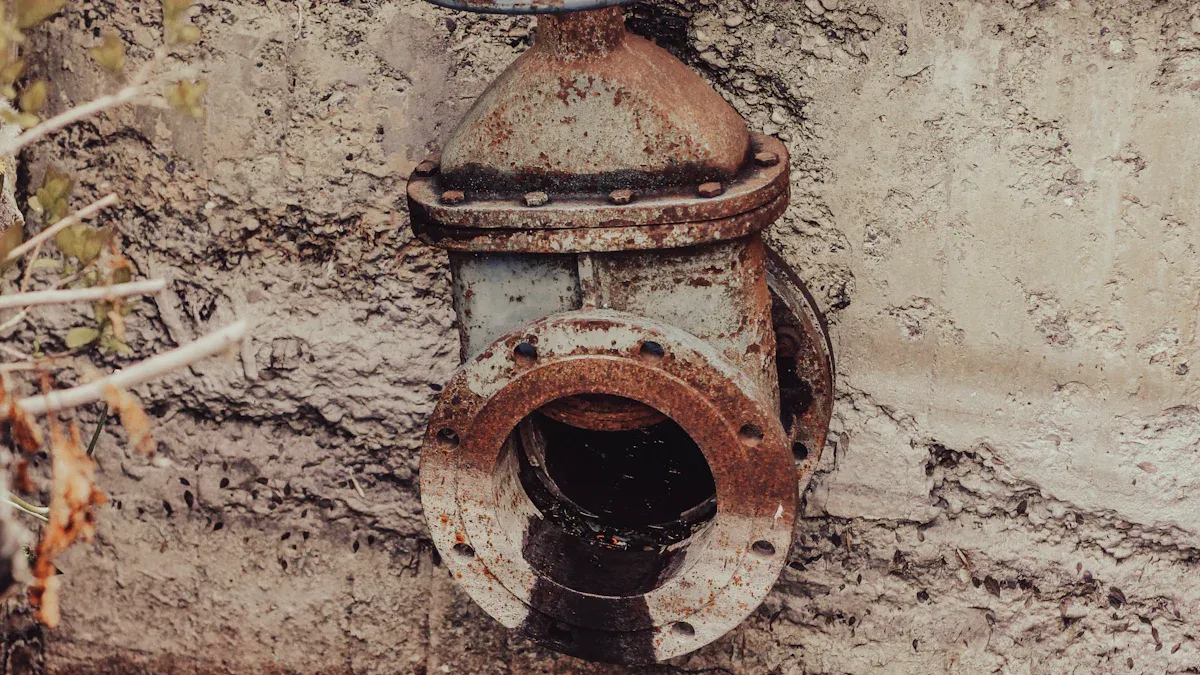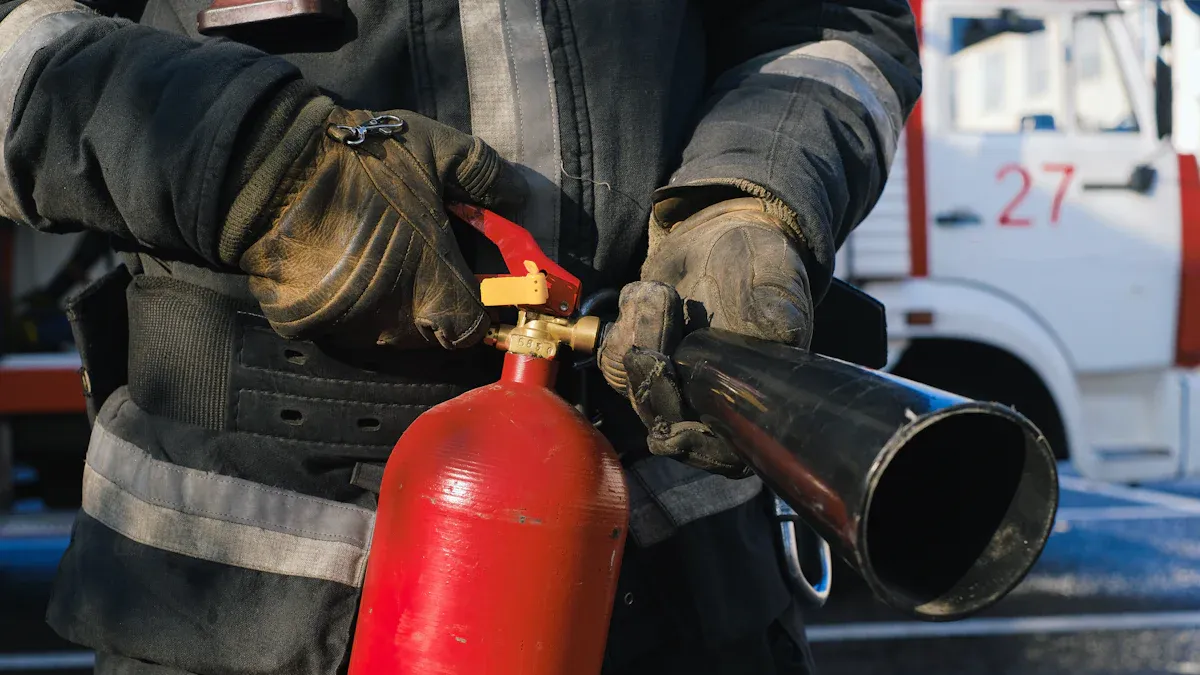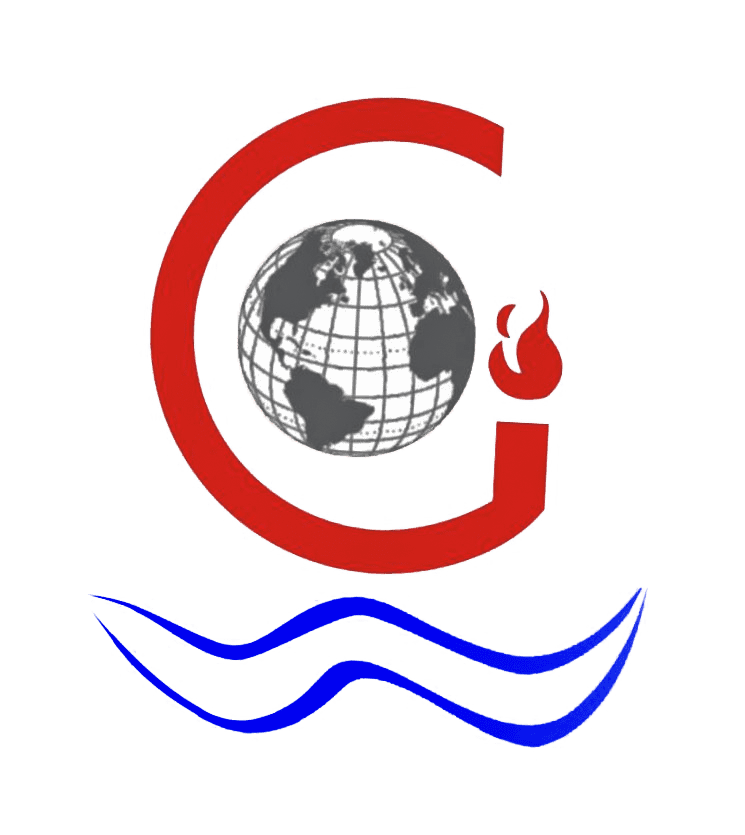
Fire Extinguisher Pillar Fire Hydrants, along with Fire Hydrant systems, play a crucial role in emergency preparedness but can encounter issues such as leaks, low water pressure, corrosion, Fire Hydrant Valve malfunctions, and obstructions. Addressing these challenges through timely troubleshooting and maintenance ensures their reliability and optimal performance during critical situations.
Regular testing and upkeep provide essential safety benefits:
- Annual inspections help identify faults early and maintain operational readiness for Fire Extinguisher Pillar Fire Hydrants and Fire Hydrant systems.
- Flow tests verify adequate water volume and pressure delivery, ensuring the effectiveness of Fire Hydrant Valve components.
- Proper maintenance guarantees that hydrants remain functional and dependable when needed most.
These proactive measures protect lives and property, emphasizing the importance of consistent care for Fire Hydrant systems provided by Yuyao World Fire Fighting Equipment Factory.
Key Takeaways
- Check Fire Extinguisher Pillar Hydrants often to keep them working. Plan yearly inspections to find problems early and fix them.
- Fix issues like leaks or weak water pressure quickly. Use good-quality parts and test water flow to keep hydrants working well.
- Pick hydrants made from strong, rust-proof materials. Make sure they meet safety rules to work well in emergencies.
Understanding Fire Extinguisher Pillar Fire Hydrants

Overview of Fire Extinguisher Pillar Fire Hydrants
Fire Extinguisher Pillar Fire Hydrants serve as critical components in fire safety systems. These hydrants provide a reliable water source for firefighting operations, ensuring quick access during emergencies. Designed for outdoor use, they connect directly to underground water supply networks. Their robust construction withstands harsh weather conditions and high-pressure water flow. Firefighters rely on these hydrants to deliver water efficiently to extinguish fires, making them indispensable in urban and industrial areas.
Key Components and Their Functions
Fire Extinguisher Pillar Fire Hydrants consist of several essential parts that work together to ensure functionality:
- Hydrant Body: Houses the internal mechanisms and connects to the water supply.
- Outlet Valves: Allow firefighters to attach hoses and control water flow.
- Stem and Operating Nut: Enable opening and closing of the hydrant.
- Drain Valve: Prevents water from freezing inside the hydrant during cold weather.
Each component plays a vital role in maintaining the hydrant’s efficiency and reliability during firefighting operations.
Role in Fire Safety Systems
Fire Extinguisher Pillar Fire Hydrants form a crucial link in fire safety systems. They provide immediate access to water, reducing response time during emergencies. Their strategic placement in urban areas ensures coverage for residential, commercial, and industrial zones. By supplying high-pressure water, these hydrants support firefighting efforts and minimize property damage. Yuyao World Fire Fighting Equipment Factory offers hydrants designed to meet stringent safety standards, ensuring dependable performance when it matters most.
Common Issues in Fire Extinguisher Pillar Fire Hydrants
Leaks and Dripping Water
Leaks in Fire Extinguisher Pillar Fire Hydrants often result from damaged seals, worn-out gaskets, or cracks in the hydrant body. These issues compromise the hydrant’s ability to maintain water pressure and can lead to water wastage. Regular inspections help identify leaks early. Technicians should examine the hydrant’s seals and connections for visible damage. Replacing faulty components promptly prevents further deterioration.
Tip: Use high-quality replacement parts to ensure durability and compatibility with the hydrant system.
Low or Inconsistent Water Pressure
Low or inconsistent water pressure disrupts firefighting operations and reduces the hydrant’s effectiveness. Common causes include blockages in the water supply line, partially closed valves, or inadequate municipal water pressure. To resolve this issue, technicians should conduct flow tests to measure water pressure. Cleaning the supply line and ensuring valves are fully open restores optimal performance.
Note: If municipal water pressure is insufficient, consider installing booster pumps to enhance water delivery during emergencies.
Corrosion and Rust Build-Up
Corrosion and rust weaken the structural integrity of Fire Extinguisher Pillar Fire Hydrants. Exposure to moisture and harsh weather accelerates this process, especially in older hydrants. Regular cleaning and application of anti-corrosion coatings protect the hydrant’s metal surfaces. Inspecting for rust during maintenance prevents long-term damage.
Alert: Hydrants in coastal or industrial areas may require more frequent anti-corrosion treatments due to higher exposure to corrosive elements.
Valve Malfunctions or Sticking
Valve malfunctions occur when debris obstructs the valve mechanism or when the operating nut becomes worn. Sticking valves hinder the hydrant’s ability to open or close properly, delaying firefighting efforts. Technicians should disassemble the valve assembly during maintenance to remove debris and lubricate moving parts. Replacing worn components ensures smooth operation.
Pro Tip: Use silicone-based lubricants for valves to reduce wear and improve longevity.
Obstructions in the Hydrant System
Obstructions in the hydrant system, such as debris or sediment buildup, block water flow and reduce efficiency. These obstructions often occur in the underground pipes or the hydrant’s internal mechanisms. Flushing the system periodically removes sediment and debris. Technicians should also inspect the hydrant’s drain valve to ensure proper drainage and prevent blockages.
Reminder: Schedule system flushing after major construction projects near hydrant installations to avoid debris accumulation.
Troubleshooting Fire Extinguisher Pillar Fire Hydrants
Identifying and Repairing Leaks
Leaks in Fire Extinguisher Pillar Fire Hydrants can compromise their efficiency and lead to water wastage. Technicians should begin by visually inspecting the hydrant for signs of water seepage around seals, gaskets, or the hydrant body. A pressure test can help pinpoint hidden leaks that are not immediately visible. Once identified, damaged seals or gaskets should be replaced promptly. For cracks in the hydrant body, epoxy-based sealants or welding may provide a temporary fix, but replacing the damaged section ensures long-term reliability.
Tip: Always use manufacturer-approved replacement parts to maintain compatibility and performance.
Resolving Water Pressure Problems
Low or inconsistent water pressure in Fire Extinguisher Pillar Fire Hydrants can hinder firefighting efforts. To address this issue, technicians should first check for partially closed valves or obstructions in the water supply line. Conducting a flow test helps determine whether the problem lies within the hydrant or the municipal water supply. If the issue stems from the hydrant, cleaning the internal components and flushing the system can restore proper flow. For municipal water pressure issues, installing a booster pump may enhance water delivery during emergencies.
Note: Regularly scheduled flow tests can help identify pressure-related problems before they escalate.
Addressing Corrosion and Rust
Corrosion and rust weaken the structural integrity of hydrants, making them prone to failure. To combat this, technicians should inspect the hydrant’s metal surfaces during routine maintenance. Removing rust with wire brushes or sandblasting ensures a clean surface for applying anti-corrosion coatings. For hydrants in coastal or industrial areas, more frequent inspections and protective treatments may be necessary. Replacing heavily corroded components prevents further damage and ensures the hydrant remains operational.
Alert: Hydrants exposed to saltwater or industrial pollutants require specialized coatings for enhanced protection.
Fixing Valve Malfunctions
Valve malfunctions often result from debris accumulation or wear and tear on the operating nut. To resolve this, technicians should disassemble the valve assembly and clean all components thoroughly. Lubricating the moving parts with a silicone-based lubricant ensures smooth operation and reduces wear. If the operating nut or other components show signs of significant wear, replacing them is essential to restore functionality. Properly functioning valves are critical for controlling water flow during emergencies.
Pro Tip: Store spare valve components on-site to minimize downtime during repairs.
Clearing Obstructions in the System
Obstructions in the hydrant system, such as sediment or debris, can block water flow and reduce efficiency. Flushing the hydrant periodically removes accumulated debris and ensures unobstructed water delivery. Technicians should also inspect the drain valve to confirm it is functioning correctly, as a clogged drain can lead to internal blockages. For hydrants located near construction sites, more frequent flushing may be necessary to prevent sediment buildup.
Reminder: Schedule system flushing after heavy rainfall or construction activities to maintain optimal performance.
Maintenance Tips for Fire Extinguisher Pillar Fire Hydrants

Regular Inspections and Cleaning
Routine inspections and cleaning are essential for maintaining the efficiency of Fire Extinguisher Pillar Fire Hydrants. Technicians should examine the hydrant body, valves, and seals for visible damage or wear. Cleaning the hydrant removes dirt, debris, and sediment that can obstruct water flow. Regular inspections ensure compliance with NFPA standards, reducing the risk of legal issues. Early detection of minor problems prevents costly repairs and ensures the hydrant remains operational during emergencies.
Tip: Schedule inspections at least once a year to maintain optimal performance and safety.
Lubricating Moving Parts
Lubrication of moving parts, such as the operating nut and valve stems, reduces wear and ensures smooth operation. Technicians should use silicone-based lubricants to prevent corrosion and extend the lifespan of components. Proper lubrication minimizes the risk of valve malfunctions, which can delay firefighting efforts. Regular maintenance of these parts guarantees adequate water flow and pressure when needed most.
Reminder: Apply lubricant during every inspection to maintain consistent performance.
Protecting Against Weather Damage
Weather conditions can significantly impact the durability of hydrants. Exposure to extreme temperatures, moisture, and UV rays accelerates wear and corrosion. Applying weather-resistant coatings protects the hydrant’s metal surfaces from rust and damage. In colder climates, technicians should ensure the drain valve functions properly to prevent freezing. These measures safeguard the hydrant against environmental factors, ensuring long-term reliability.
Alert: Hydrants in coastal areas require additional protection due to high salt content in the air.
Scheduling Professional Maintenance Services
While routine maintenance can address many issues, professional services provide a deeper level of care. Certified technicians possess the expertise to identify hidden problems and perform advanced repairs. Scheduling professional maintenance annually ensures the hydrant complies with safety standards and operates efficiently. This proactive approach enhances the hydrant’s lifespan and reliability during emergencies.
Pro Tip: Partner with trusted manufacturers like Yuyao World Fire Fighting Equipment Factory for expert maintenance solutions.
Buying Guide for Fire Extinguisher Pillar Fire Hydrants
Assessing Material Quality and Durability
Material quality directly impacts the performance and lifespan of hydrants. Buyers should prioritize hydrants made from corrosion-resistant materials like ductile iron or stainless steel. These materials withstand harsh weather and high-pressure water flow. Inspecting the hydrant’s finish for anti-corrosion coatings ensures additional protection. Durable construction minimizes the risk of damage during emergencies, making it a critical factor in the selection process.
Ensuring Compliance with Safety Standards
Compliance with safety standards guarantees the hydrant’s reliability during emergencies. Buyers should verify that the hydrant meets local and international standards, such as those set by the NFPA or ISO. Certified hydrants undergo rigorous testing to ensure they perform under extreme conditions. Choosing compliant products enhances safety and reduces liability risks.
Evaluating Ease of Installation and Maintenance
Hydrants designed for straightforward installation save time and labor costs. Buyers should look for models with clear instructions and compatibility with existing systems. Maintenance-friendly designs, such as easily accessible components, simplify routine inspections and repairs. This ensures the hydrant remains operational with minimal downtime.
Considering Warranty and Customer Support
A comprehensive warranty reflects the manufacturer’s confidence in their product. Buyers should review warranty terms to understand coverage for defects or malfunctions. Reliable customer support ensures prompt assistance with installation, maintenance, or troubleshooting. Partnering with manufacturers offering robust after-sales service adds long-term value.
Why Choose Yuyao World Fire Fighting Equipment Factory
Yuyao World Fire Fighting Equipment Factory stands out for its commitment to quality and innovation. Their Fire Extinguisher Pillar Fire Hydrants are crafted from premium materials, ensuring durability and performance. Each hydrant complies with stringent safety standards, providing peace of mind to buyers. The factory offers user-friendly designs, making installation and maintenance hassle-free. With excellent warranty terms and responsive customer support, Yuyao World Fire Fighting Equipment Factory remains a trusted choice for fire safety solutions.
Identifying and resolving issues in Fire Extinguisher Pillar Fire Hydrants ensures their reliability during emergencies. Regular maintenance, including inspections and cleaning, extends their lifespan and enhances performance. Proactive troubleshooting minimizes risks and prevents costly repairs. Investing in high-quality hydrants and following these steps guarantees dependable fire safety systems that protect lives and property.
FAQ
What is the recommended frequency for inspecting Fire Extinguisher Pillar Fire Hydrants?
Annual inspections are recommended to identify potential issues early. High-risk areas may require semi-annual checks to ensure optimal performance and compliance with safety standards.
Can Fire Extinguisher Pillar Fire Hydrants operate in freezing temperatures?
Yes, hydrants with functional drain valves prevent freezing by allowing water to drain after use. Regular maintenance ensures these valves remain effective in cold climates.
How can buyers ensure compatibility with existing fire safety systems?
Buyers should consult the manufacturer’s specifications and confirm compatibility with local water supply systems. Yuyao World Fire Fighting Equipment Factory offers expert guidance for seamless integration.
Tip: Always verify system requirements before purchasing to avoid installation challenges.
Post time: May-14-2025

